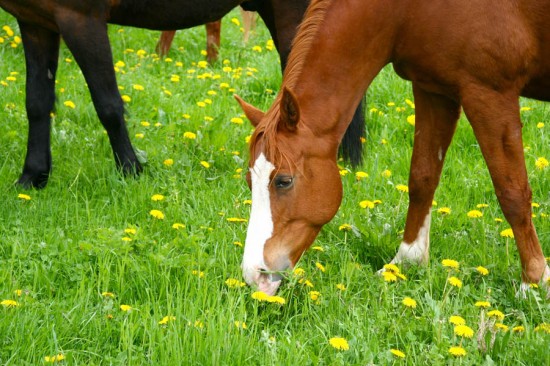
There was a time when all living things in heaven and earth were created by the hand of God, or a product of evolution, depending on you philosophical belief. That time is now gone, never to return. The creation of biogenetically engineered animals is becoming more and more common place. To date over 660 patents have been issued for genetically manipulated animals in United States alone and the number is increasing every year.
The Golfish just turned 10 years old. Happy birthbay! Just a decade ago there was no such thing as a Glofish. What exactly would be the purpose for making a fish glow? Good question, especially if you stop to consider how much easier they would for a potential predator to find and decide they might make a tasty snack. But the goal was not to create a fish that screamed out, 揌ere I am. Come eat me.?Nor was it to create an entirely new species for the thriving global ornamental fish industry. In fact, monetary gain did not come into play at all when in 1999 when Dr. Zhiyuan Gong and his team of bioengineers at NSU (the National University of Singapore) decide to genetically modify a preexisting freshwater species of fish to make it glow. So if eradicating a nuisance species by making it more easily detectable, or accumulating a vast fortune by creating a 搈ust have?novelty item for the hungry fish hobbyist market was not the objective, then what was? As incredulous as it may sound, the objective was to create a fish that would selectively luminescence when it came into contact with environmental contaminants. Hmmm?a fish that fights pollution by tracking industrial ecological offenders to their source, we might be on to something here! Do you think it was a sheer coincidence that the first Glofish ever created was GREEN?
So exactly what is involved in creating a species that is biologically designed to help save the planet? The logical first step is to engineer a fish that glows to begin with. Once you have a fish that glows then you can set about tackling the issue of selective bioluminescence.
These were the problems faced by bioengineering team in Singapore a decade ago. Of course before you can make a fish glow, you must first have a fish. The team settled on the Brachydanio reri, a species endemic to East India, more commonly referred to as a zebra danio or zebrafish because of it horizontal striping. Why choose a fish that isn抰 indigenous to Singapore? This could have been strictly a matter of convenience. Most of the world抯 supply of this popular minnow variety is raised on fish farms, one of which is located in Singapore. Acquisitioning a batch of fish eggs for scientific research would seem preferable to a bunch of geneticists wading around in streams with fish nets in hand.
The scientists then turned to the jellyfish for the initial phase in the creation of their aquatic toxic detective. Aequorea victoria, more commonly known as crystal jellyfish, contains the bioluminescent gene GPF (Green Fluorescent Protein). When injected into a zebrafish embryo, the addition of GPF produced a fish that absorbed and then readmitted light from the green spectrum. A variant of this jellyfish gene caused the resulting offspring to fluoresce yellow. RFP (Red Fluorescent Protein) derived from sea coral of the genus discosoma created zebrafish that luminescence in red. While this scientific feat was amazing in and of itself, it was only the first step in creating a fish that would actually glow when exposed to toxic waste material. What they did create, however, was a previously nonexistent transgenic species that would go on to spark controversy around the world.
The creation of the world抯 first florescent fish was bound to draw some attention. It did not take long for news of NUS抯 success to reach the desks of entrepreneurs Alan Blake and Richard Crockett. They wasted no time in sewing up exclusive worldwide rights for the sell of Glofish. Yorktown Technologies of Austin, Texas then went to work commercially raising Glofish for the thriving aquarium trade industry. Fortunately for Blake and Crockett, fish farms for the production of zebra danios had been in existence in the southern parts of United States since as early as the 30s. It was not much of a leap to raise a species that is only a single gene removed.
Exactly what happens when corporate entities start announcing their intentions to unleash bioengineered transgenic organisms upon an unwary planet? Is this just an ultra-cool novelty item predestined to become a favorite among aquarium owners around the world? Or are we in fact letting a bioengineered genie escape from the bottle never to be returned? Once you allow the sell of a single transgenic organism on the open market the precedent has been set. Glofish could just as easily be construed as Frankenfish as they could be perceived as harmless new variety of aquarium fish. Many nations had already foreseen the eventual marketing of biologically manipulated organisms and had enacted legislation to prevent such an 揳trocity?from ever happening. Those that did not took swift and decisive action. Even before Golfish were available for sale they were banned in Europe, Japan, Australia, Canada and California despite over two years of extensive ecological risk assessment studies preformed by Yorktown Technologies.
Bioengineered transgenic manipulation aside, environmentalist have long expressed concern about the potential ecological ramifications of nonnative species being intentionally or even accidentally introduced to an established ecosystem. It is for this same reason that the sell or possession of piranha is illegal in most of the U.S. There are document case studies where the global availability of various species of aquarium fish has resulted in the introduction and proliferation of non-indigenous species. One such example is the plati fish (Xiphophorus maculates). The plati is native to southern Tamaulipas and northern Vera Cruz, states in northeastern Mexico. This species is particularly well suited for slower moving freshwater systems such as canals, ditches and warm springs. They have established significant populations in the United States in the canal systems of Tampa Bay and Gainesville, Florida. They have become naturalized in the state of Montana. They have also acclimated to the freshwaters of Columbia, Singapore, and Hong Kong. Hong Kong ecologists report that these 搃llegal aliens?are creating an adverse impact on their aquatic ecosystems due to the plati抯 prolific breading habits. The tilapia, a cichlid native to the Amazon River Basin, has been deemed a nuisance species in the southern US after populations sprang up from what was undoubtedly an aquarium trade related release into the wild.
The complete globalization of the ornamental fish industry took place over a half a century ago. Hundreds of freshwater and saltwater species can be purchased as pets in virtually any industrialized nation in the world. In a day and age when both regional and national governmental agencies have no choice but to develop and implement AIS (Aquatic Invasive Species) management systems there has only been single instance of zebra danios successfully establishing a reproducing population in the wild. This population established itself in Columbia, coincidentally close to a fish farming facility that rears zebrafish for exportation. Zebra danios and Glofish share an identical genome with the exception of the single fluorescing gene.
Fluorescing fish are the first and might very possibly go down in history as the only genetically modified animals to be commercially sold as pets, at least in the immediately foreseeable future. In a day and age when pigs, rabbits, and even household pets such as dogs and cats florescence, perhaps keeping the genetic genie tightly sealed in its bottle is wise. Fifty years from now, however, not having a dog or a cat that literally glows in the dark might be considered extremely old fashion or possibly even irresponsible pet ownership. I抣l leave that up to the future to decide. As for me, it抯 time to call this a wrap. I have to feed my Glofish.
 Greater Swiss Mountain Dog Hereditary Health And Longevity
Greater Swiss Mou
Greater Swiss Mountain Dog Hereditary Health And Longevity
Greater Swiss Mou
 Does Your Dog Run Up And Bark At Strangers?
Does Your Dog Run
Does Your Dog Run Up And Bark At Strangers?
Does Your Dog Run
 Minimising The Spread Of Canine Germs And Bacteria
Minimising The Sp
Minimising The Spread Of Canine Germs And Bacteria
Minimising The Sp
 Should I Feed Herbal Supplements To My Horse?
Should I Feed Her
Should I Feed Herbal Supplements To My Horse?
Should I Feed Her
 Why Do Dogs Get The Shakes ?
Why Do Dogs Get T
Why Do Dogs Get The Shakes ?
Why Do Dogs Get T
Copyright © 2005-2016 Pet Information All Rights Reserved
Contact us: www162date@outlook.com